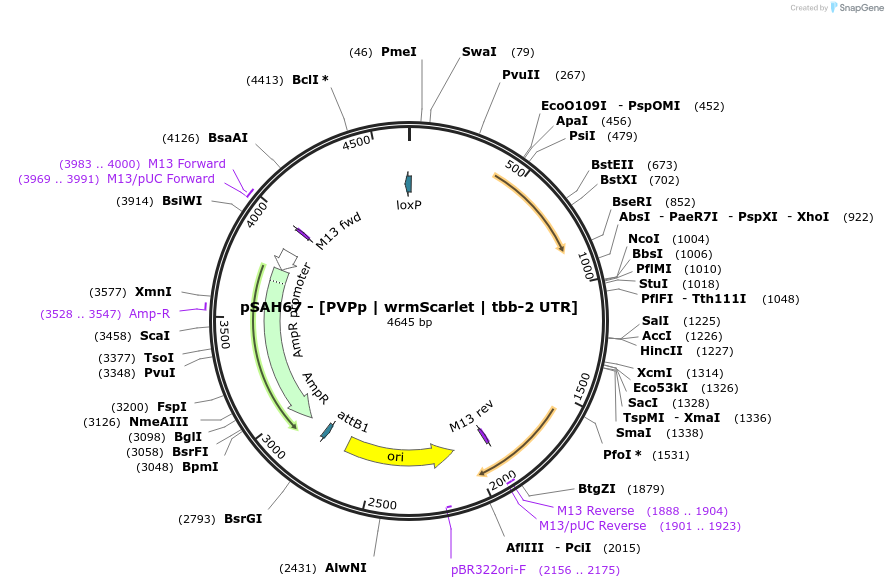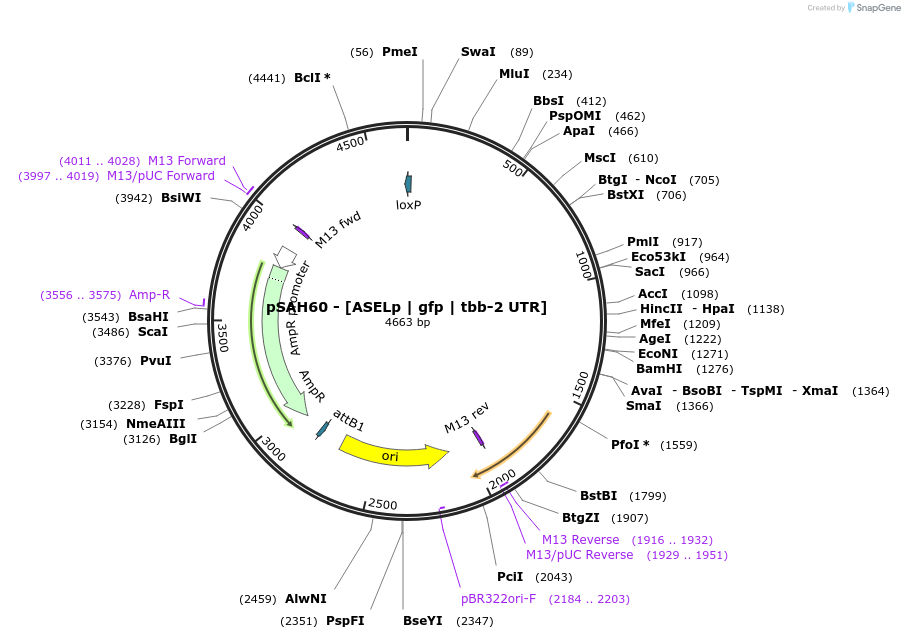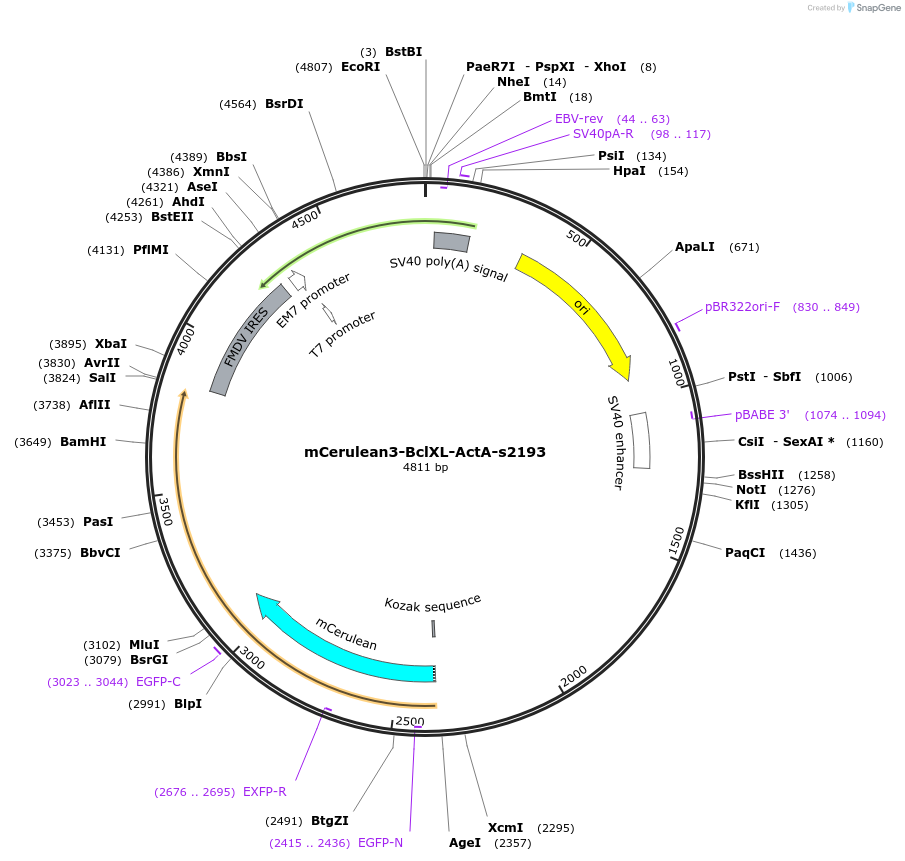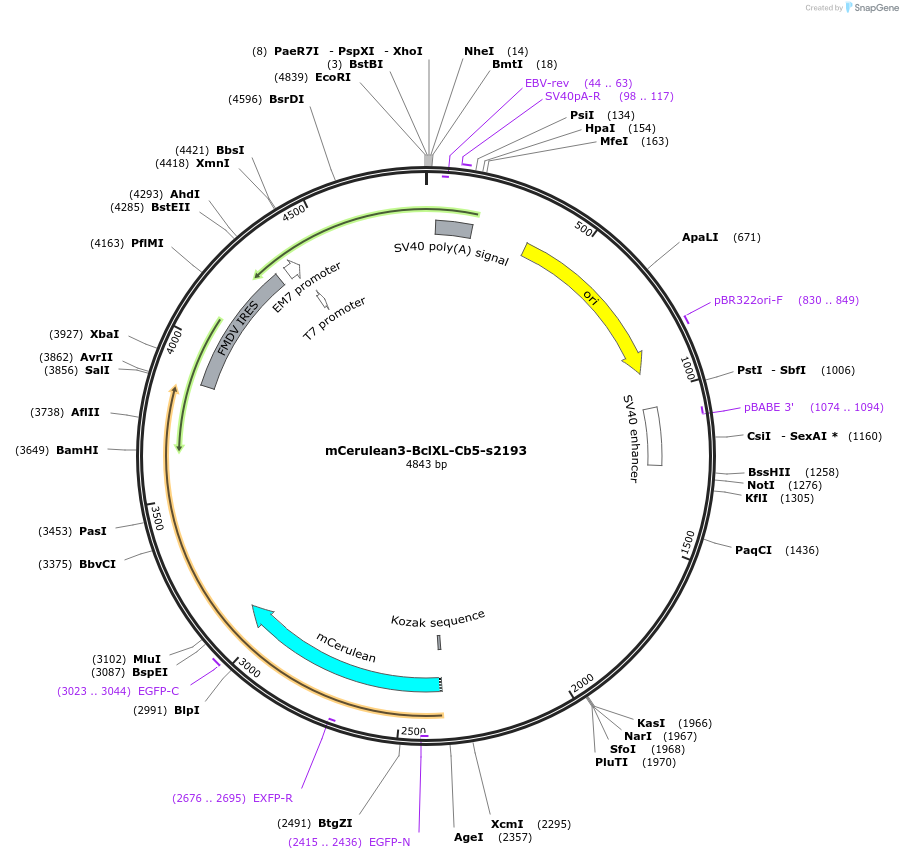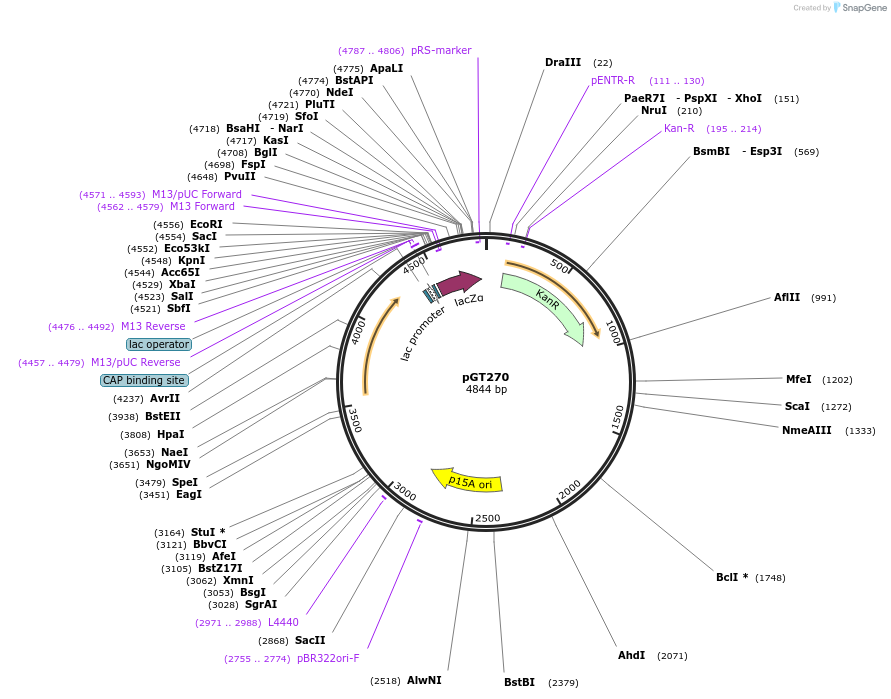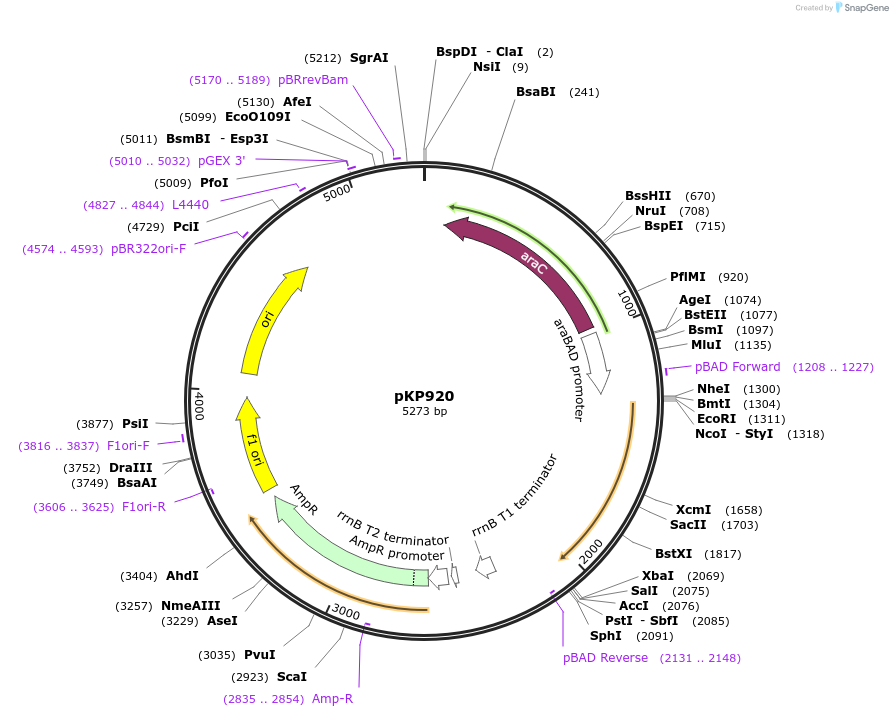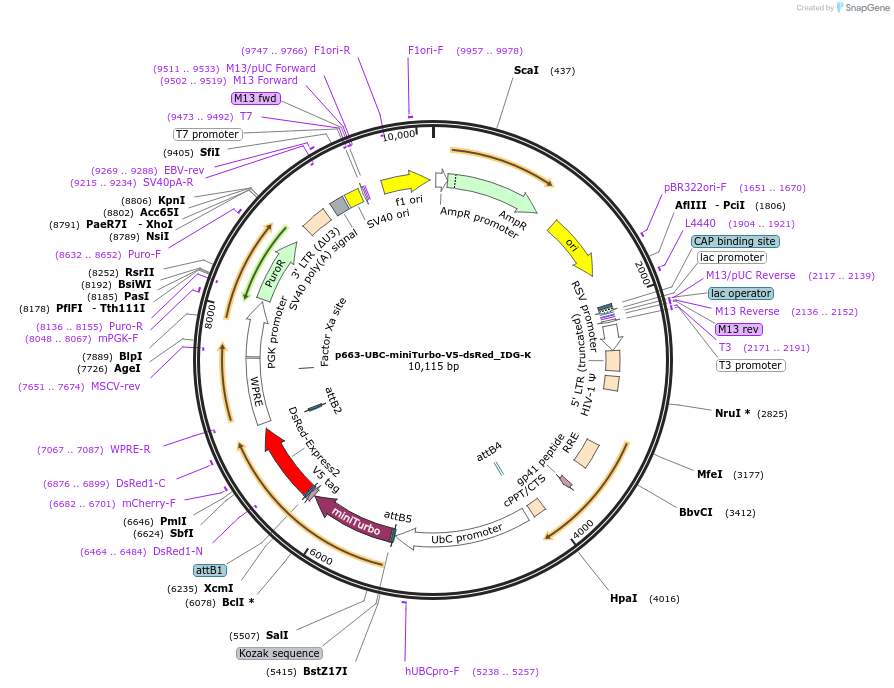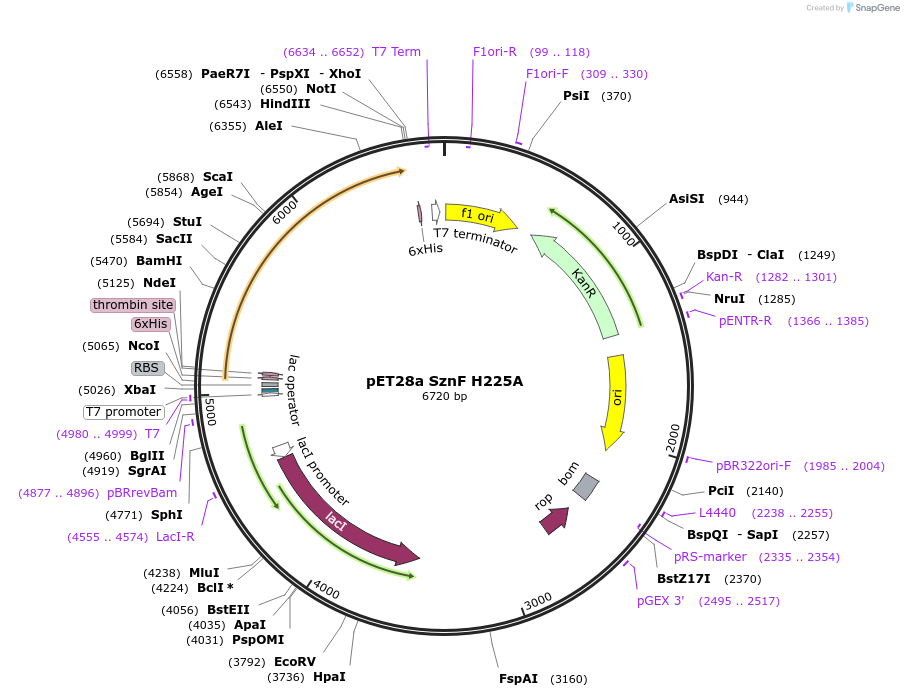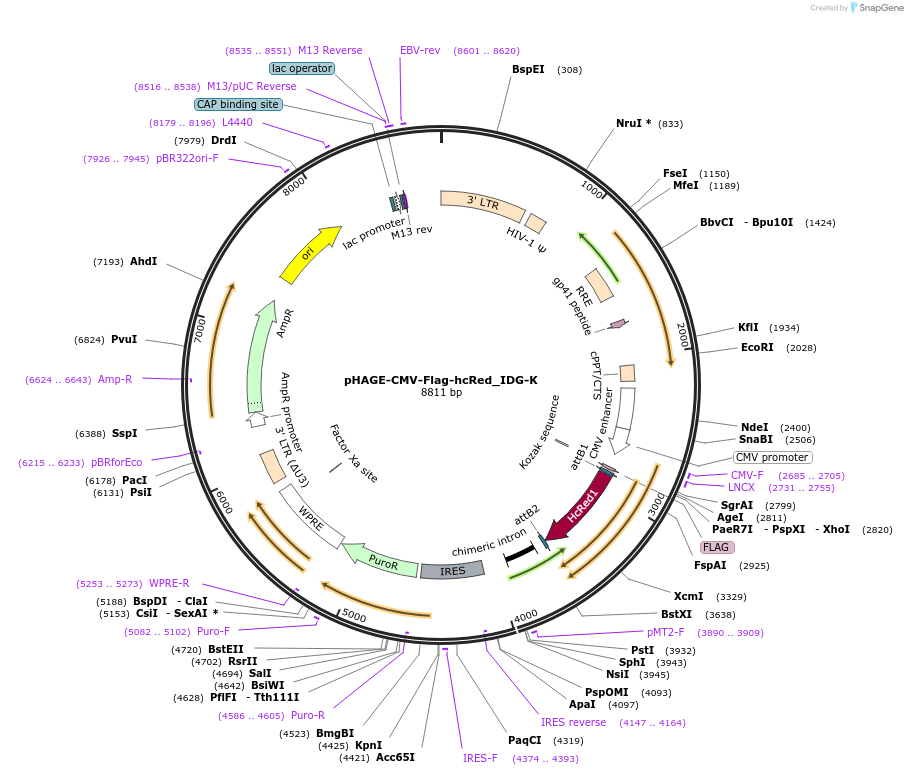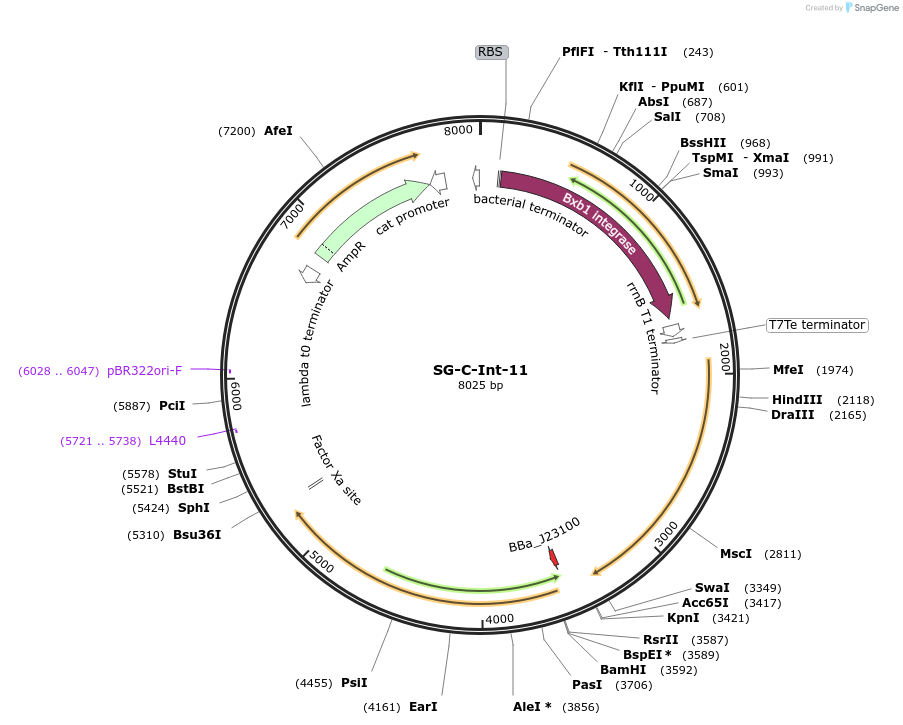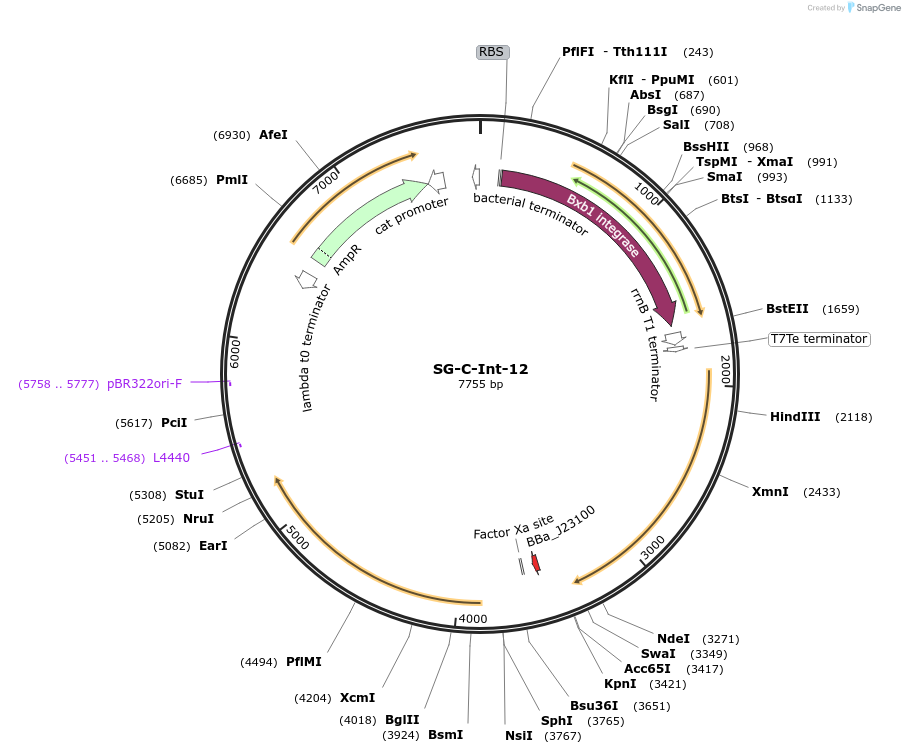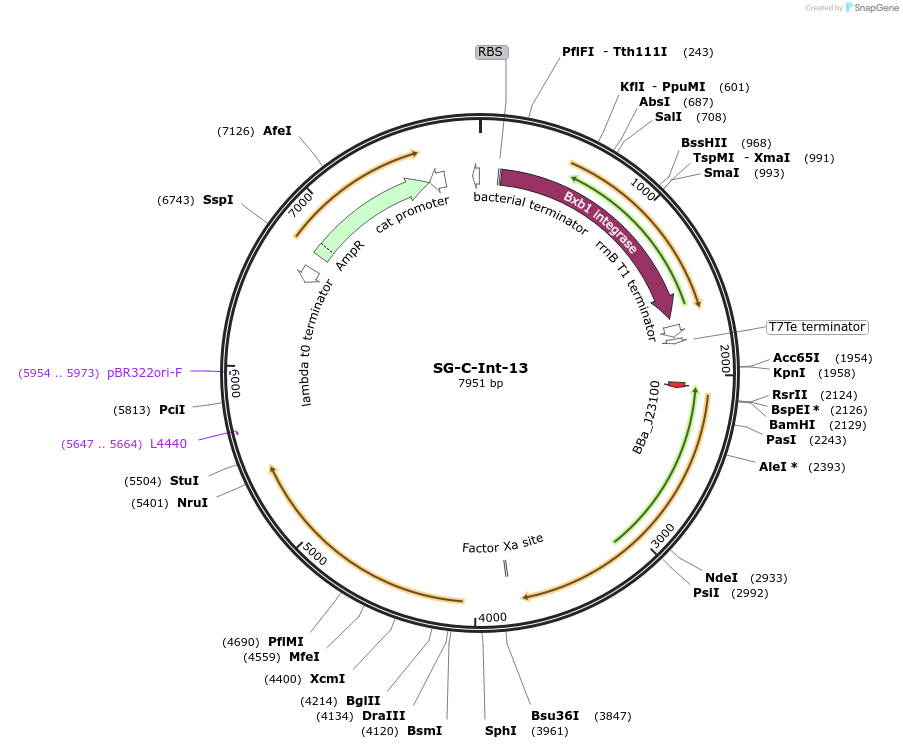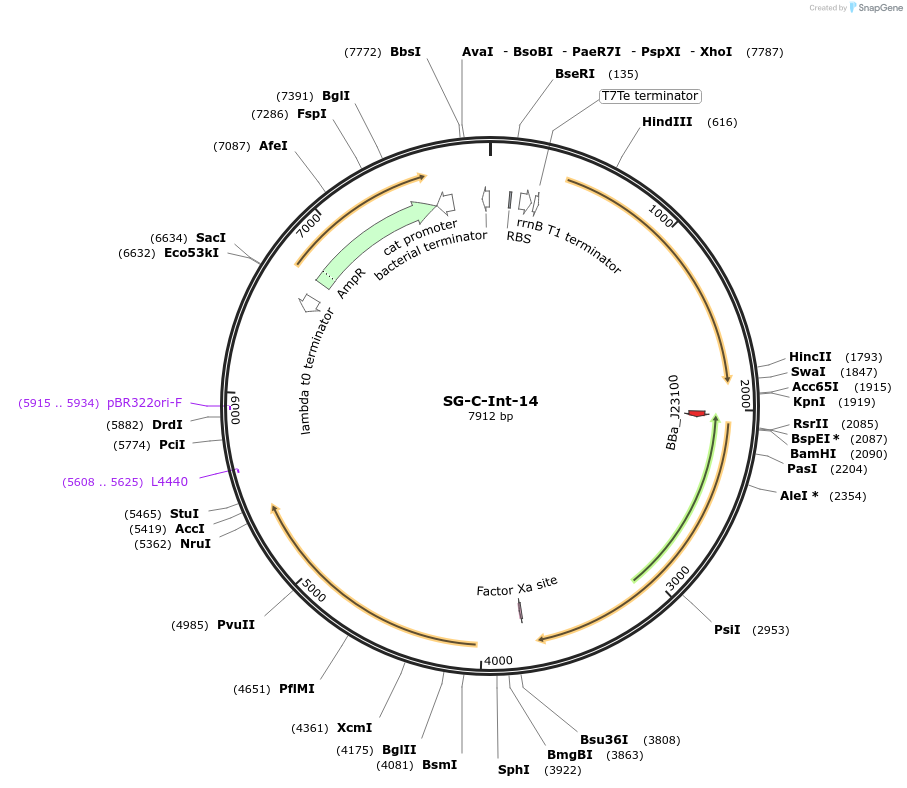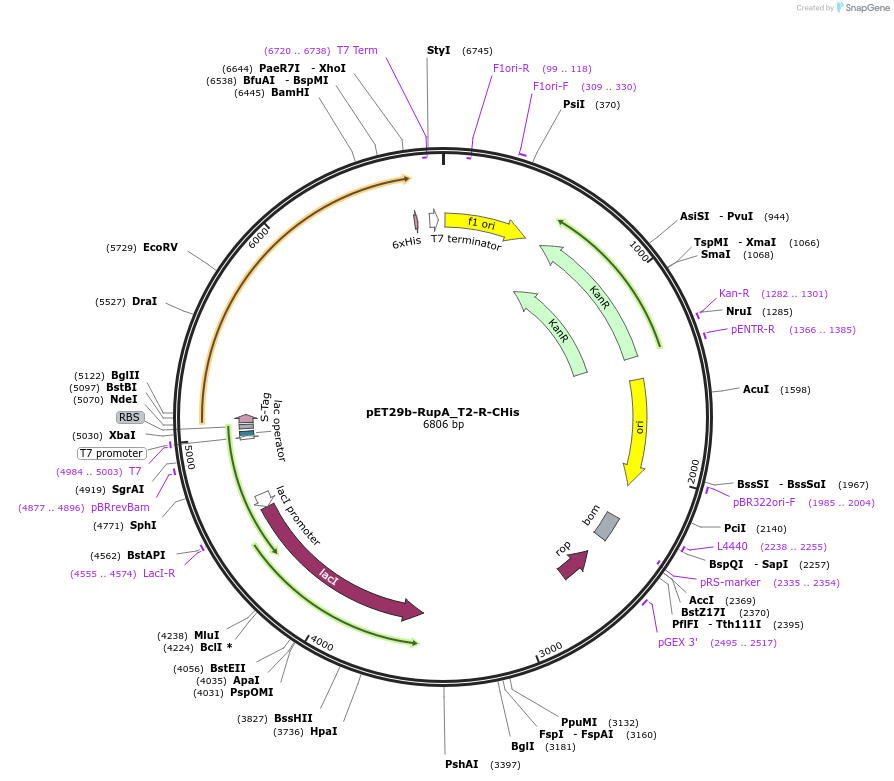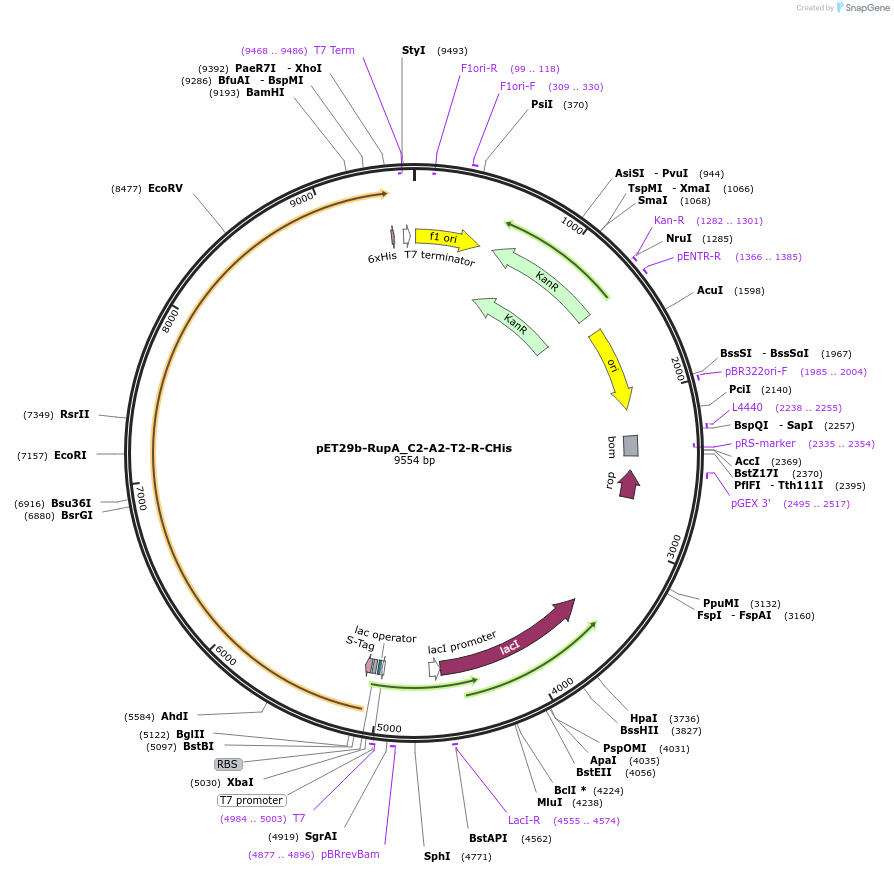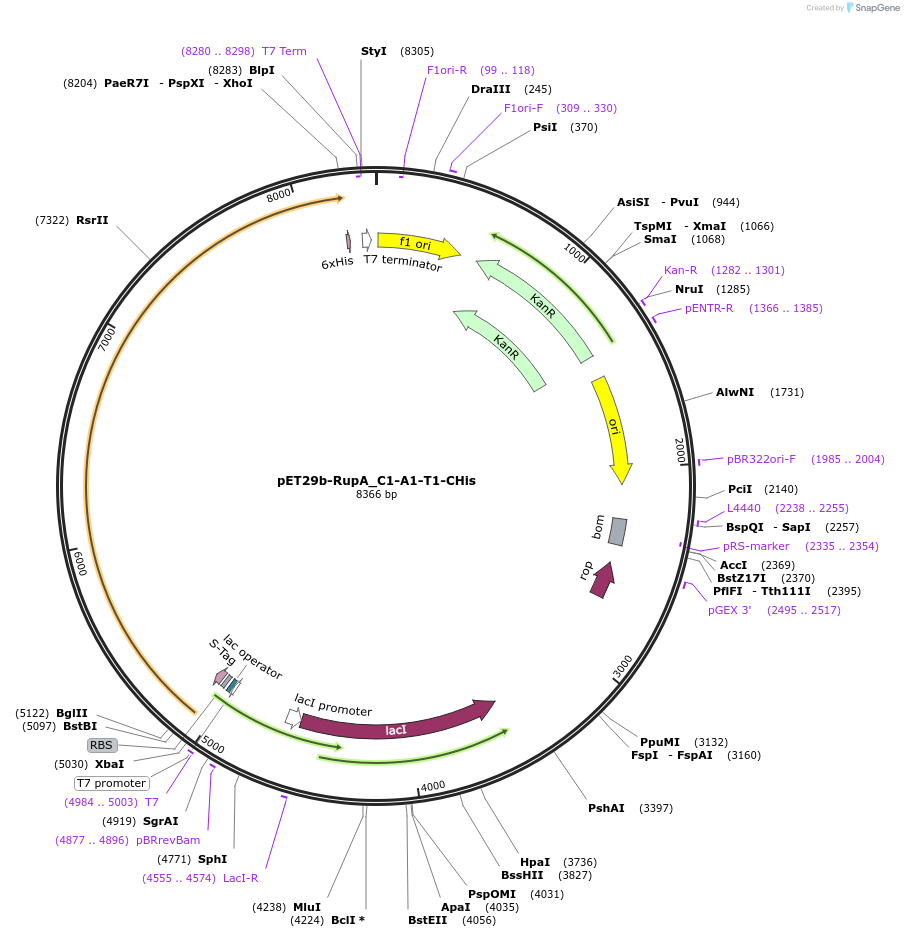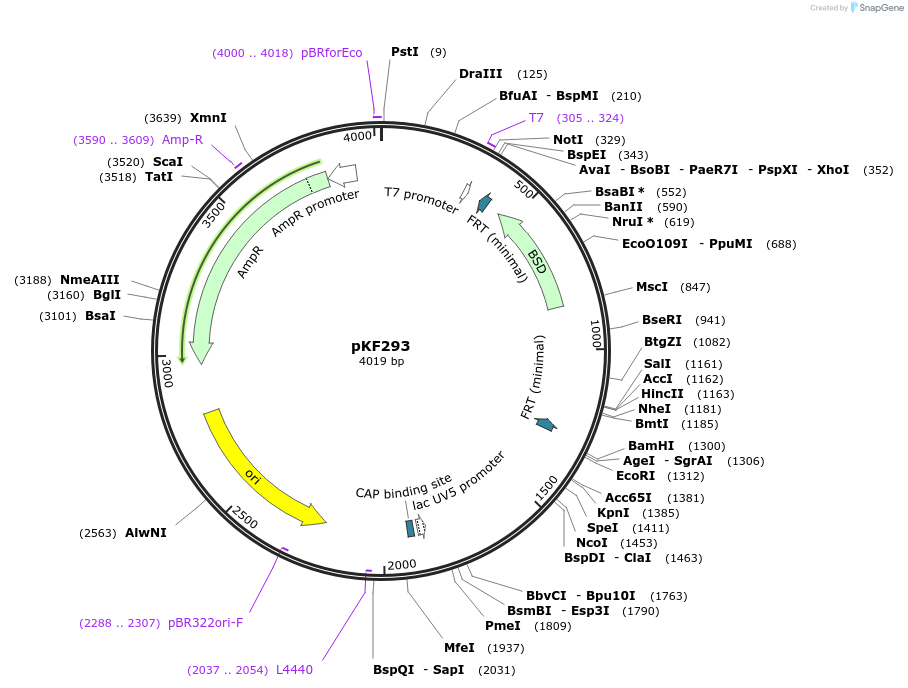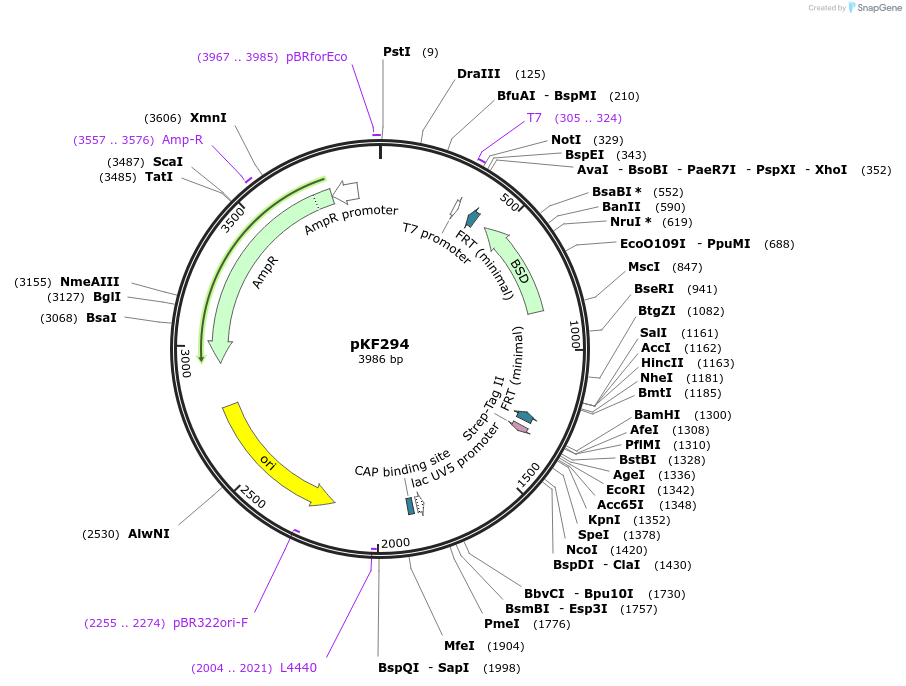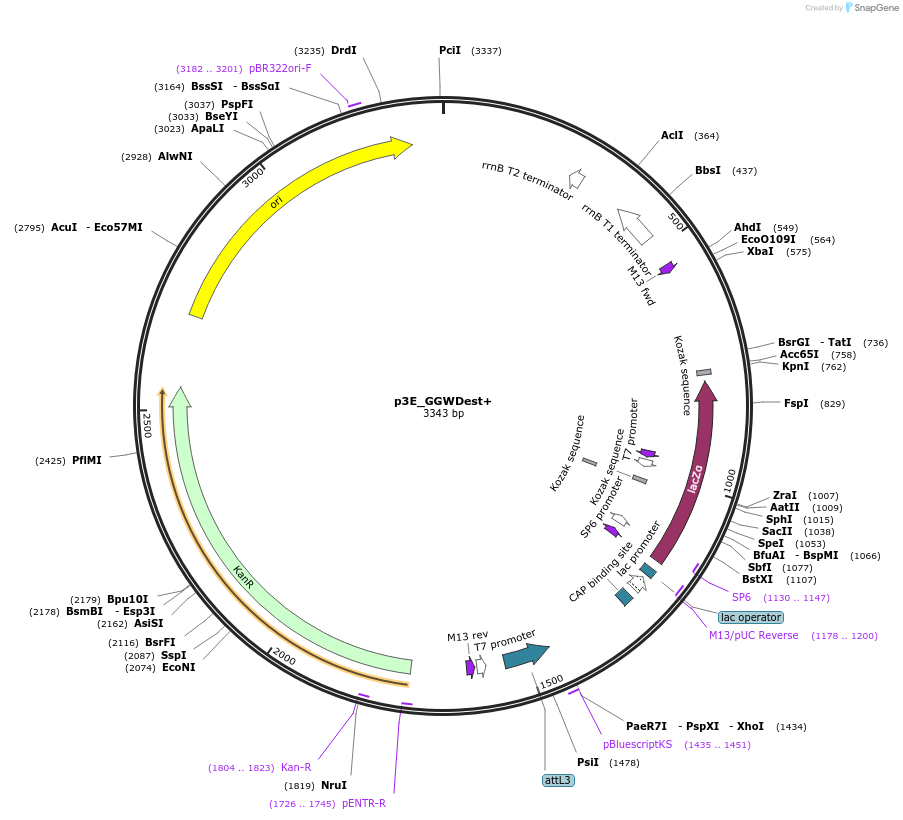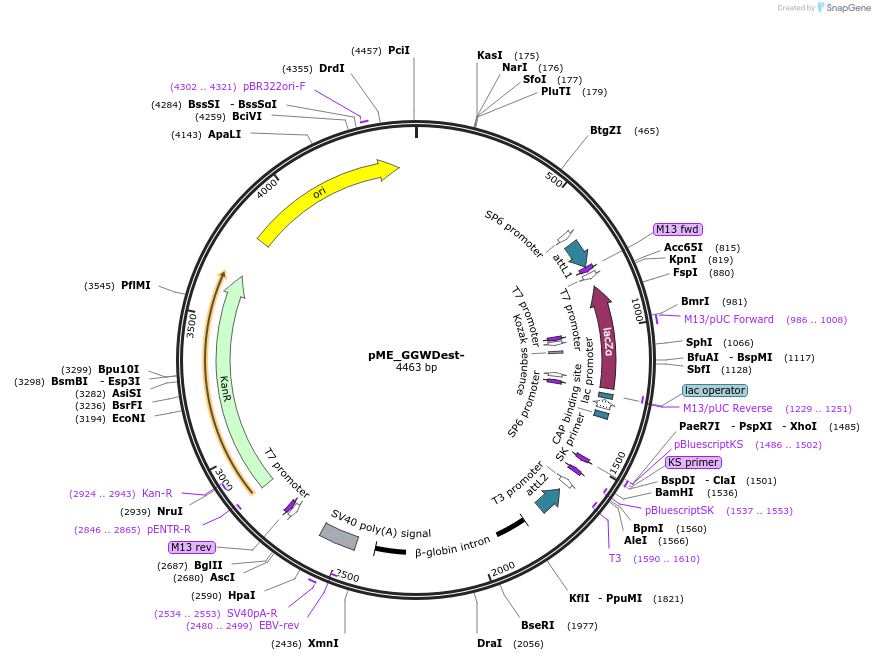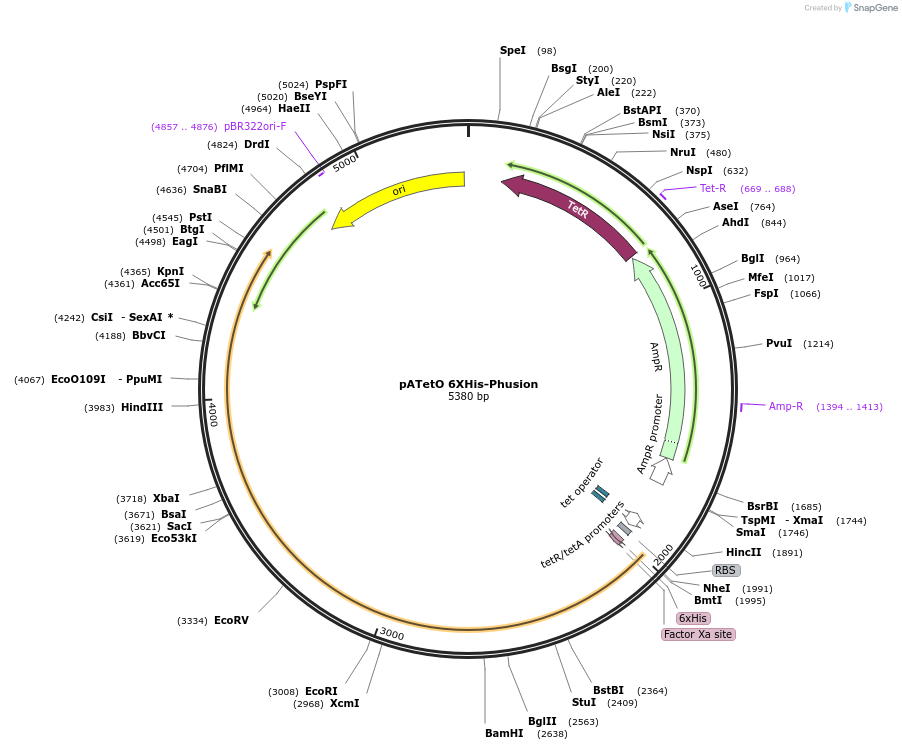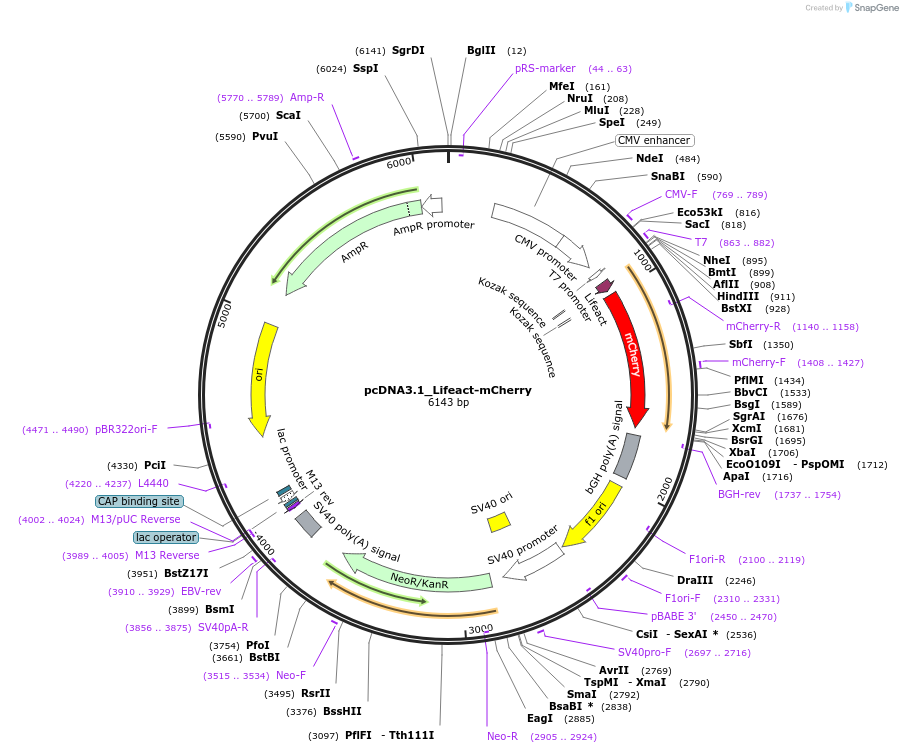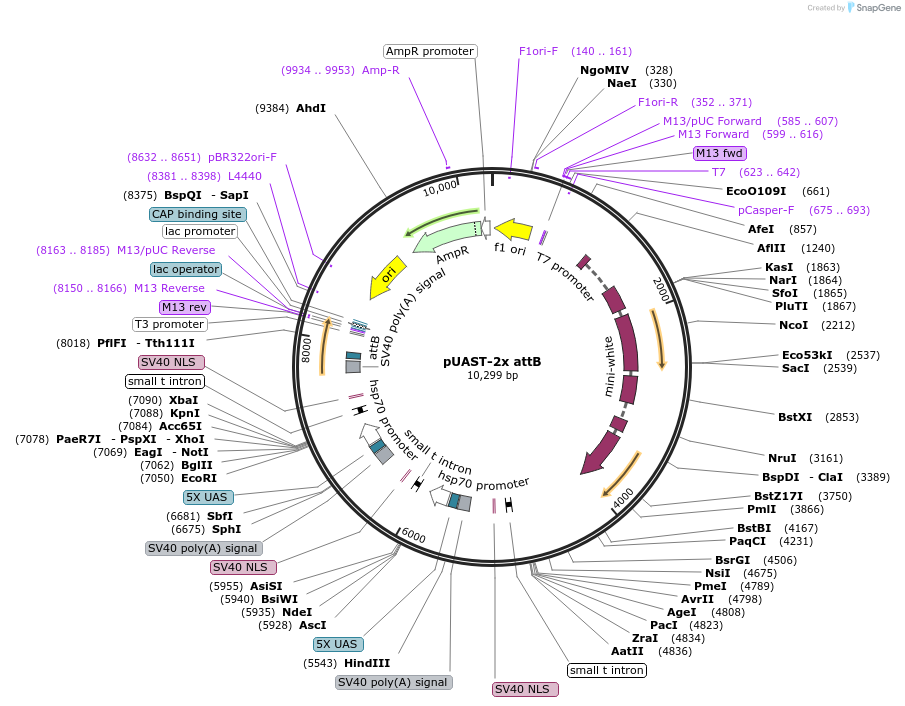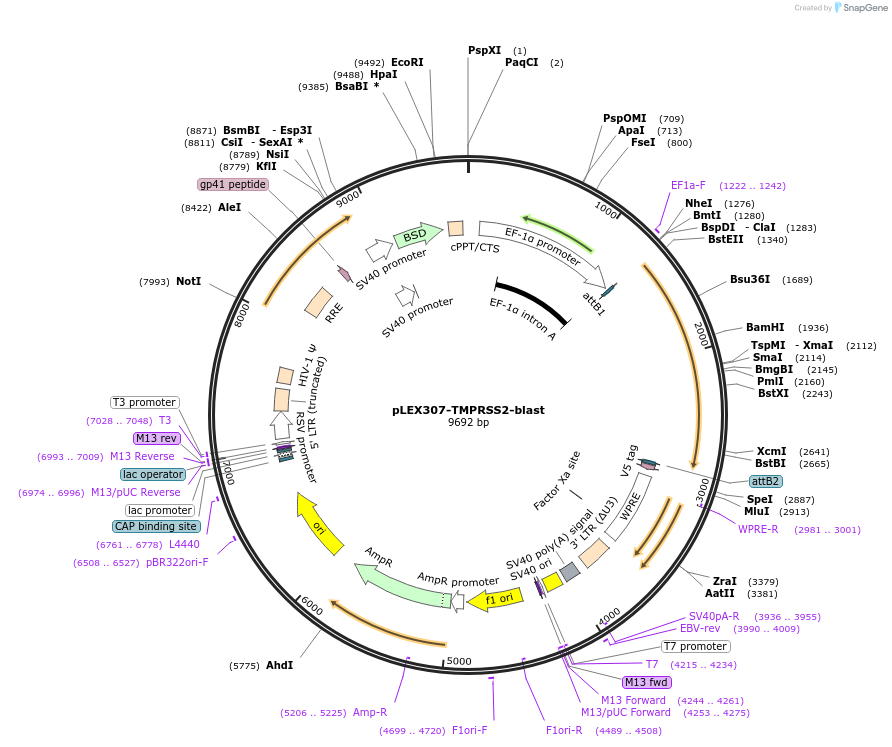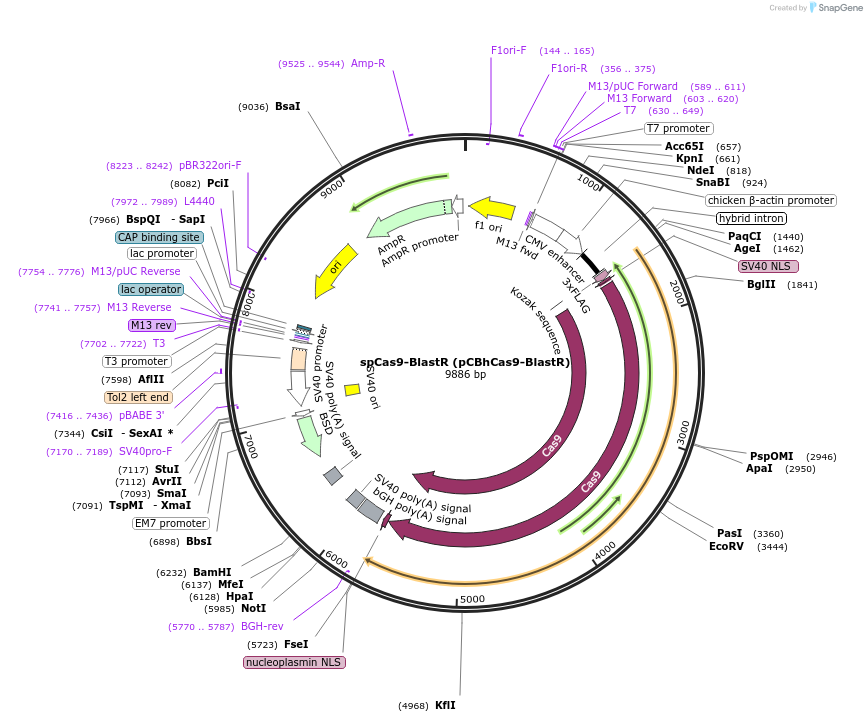We narrowed to 27,048 results for: STI
-
Plasmid#200341PurposemScarlet BioPart for PVP neurons. (1) Mark neurons or (2) cell-specific expression of transgenes (N or C-terminal fusions, or untagged). Compatible with single-copy insertion (MosTI) or arrays.DepositorInsert[PVPp | wrmScarlet | tbb-2 UTR]
ExpressionWormPromoterWBGene00003840, ocr-3Available SinceJune 15, 2023AvailabilityAcademic Institutions and Nonprofits only -
pSAH77 - [AWBp | wrmScarlet | tbb-2 UTR]
Plasmid#200351PurposemScarlet BioPart for AWB neurons. (1) Mark neurons or (2) cell-specific expression of transgenes (N or C-terminal fusions, or untagged). Compatible with single-copy insertion (MosTI) or arrays.DepositorInsert[AWBp | wrmScarlet | tbb-2 UTR]
ExpressionWormPromoterWBGene00005701, sru-38Available SinceJune 15, 2023AvailabilityAcademic Institutions and Nonprofits only -
pSAH78 - [AWBp | gfp | tbb-2 UTR]
Plasmid#200352Purposegfp BioPart for AWB neurons. (1) Mark neurons or (2) cell-specific expression of transgenes (N or C-terminal fusions, or untagged). Compatible with single-copy insertion (MosTI) or arrays.DepositorInsert[AWBp | gfp | tbb-2 UTR]
ExpressionWormPromoterWBGene00005701, sru-38Available SinceJune 15, 2023AvailabilityAcademic Institutions and Nonprofits only -
pSAH76 - [ADFp | gfp | tbb-2 UTR]
Plasmid#200350Purposegfp BioPart for ADF neurons. (1) Mark neurons or (2) cell-specific expression of transgenes (N or C-terminal fusions, or untagged). Compatible with single-copy insertion (MosTI) or arrays.DepositorInsert[ADFp | gfp | tbb-2 UTR]
ExpressionWormPromoterWBGene00005359, srh-142Available SinceJune 15, 2023AvailabilityAcademic Institutions and Nonprofits only -
pSAH60 - [ASELp | gfp | tbb-2 UTR]
Plasmid#200334Purposegfp BioPart for ASEL neurons. (1) Mark neurons or (2) cell-specific expression of transgenes (N or C-terminal fusions, or untagged). Compatible with single-copy insertion (MosTI) or arrays.DepositorInsert[ASELp | gfp | tbb-2 UTR]
ExpressionWormPromoterWBGene00001533, gcy-6Available SinceJune 15, 2023AvailabilityAcademic Institutions and Nonprofits only -
mCerulean3-BclXL-ActA-s2193
Plasmid#177411PurposeTo express mCerulean3 fused to the N-terminus of the Bcl-2 family chimera protein, Bcl-XL-ActA: Bcl-XL with its membrane binding region swapped for ActA (mitochondrial targeting sequence).DepositorInsertBcl-XL-ActA, BclX-acta
TagsmCerulean3ExpressionMammalianPromoterHuman ferritinAvailable SinceJan. 3, 2023AvailabilityAcademic Institutions and Nonprofits only -
mCerulean3-BclXL-Cb5-s2193
Plasmid#177413PurposeTo express mCerulean3 fused to the N-terminus of the Bcl-2 family chimera protein, Bcl-XL-Cb5: Bcl-XL with its membrane binding region swapped for Cb5 (ER targeting sequence).DepositorInsertBcl-XL-Cb5, BclX-cb5
TagsmCerulean3ExpressionMammalianPromoterHuman ferritinAvailable SinceJan. 3, 2023AvailabilityAcademic Institutions and Nonprofits only -
pGT270
Plasmid#171878PurposeStart-Stop Level 2 destination vector for Synechocystis sp. PCC 6803DepositorTypeEmpty backboneUseSynthetic BiologyMutationN/AAvailable SinceFeb. 17, 2022AvailabilityAcademic Institutions and Nonprofits only -
pKP920
Plasmid#160814PurposeExpression of ExbB proteinDepositorInsertexbB
ExpressionBacterialAvailable SinceNov. 23, 2020AvailabilityAcademic Institutions and Nonprofits only -
p663-UBC-miniTurbo-V5-dsRed_IDG-K
Plasmid#135260PurposeGateway destination clone of dsRed (as control) tagged with N-terminal miniTurbo-V5 for generating protein-proximity networks using proximity-dependent biotinylation proteomicsDepositorInsertminiTurbo-V5-dsRed
UseLentiviral; Gateway destinationTagsV5-miniTurboExpressionMammalianPromoterUbiquitinAvailable SinceSept. 16, 2020AvailabilityAcademic Institutions and Nonprofits only -
pET28a SznF H225A
Plasmid#139590Purposeexpresses SznF H225ADepositorInsertSznF H225A
TagshexahistidineExpressionBacterialMutationchanged histidine 225 to alaninePromoterT7Available SinceMarch 2, 2020AvailabilityAcademic Institutions and Nonprofits only -
pHAGE-CMV-Flag-hcRed_IDG-K
Plasmid#135274PurposeGateway destination clone of hcRed (as control) tagged with N-terminal Flag for generating protein-protein networks using fusion tag affinity-based proteomicsDepositorInsertFlag-hcRed
UseLentiviral; Gateway destinationTagsFlagExpressionMammalianPromoterCMVAvailable SinceDec. 20, 2019AvailabilityAcademic Institutions and Nonprofits only -
SG-C-Int-11
Plasmid#117040PurposeConstitutive integrase cassette - Bxb1-Tp901-Int5DepositorInsertConstitutive integrase cassette - Bxb1-Tp901-Int5
UseSynthetic BiologyAvailable SinceMay 9, 2019AvailabilityAcademic Institutions and Nonprofits only -
SG-C-Int-12
Plasmid#117041PurposeConstitutive integrase cassette - Bxb1-Tp901-Int7DepositorInsertConstitutive integrase cassette - Bxb1-Tp901-Int7
UseSynthetic BiologyAvailable SinceMay 9, 2019AvailabilityAcademic Institutions and Nonprofits only -
SG-C-Int-13
Plasmid#117042PurposeConstitutive integrase cassette - Bxb1-Int5-Int7DepositorInsertConstitutive integrase cassette - Bxb1-Int5-Int7
UseSynthetic BiologyAvailable SinceMay 9, 2019AvailabilityAcademic Institutions and Nonprofits only -
SG-C-Int-14
Plasmid#117043PurposeConstitutive integrase cassette - Tp901-Int5-Int7DepositorInsertConstitutive integrase cassette - Tp901-Int5-Int7
UseSynthetic BiologyAvailable SinceMay 9, 2019AvailabilityAcademic Institutions and Nonprofits only -
pET29b-RupA_T2-R-CHis
Plasmid#109258PurposeNRPS di-domain containing TR domains with C-terminal 6His tagDepositorArticleInsertRupA_T2-R
TagsHis tag and S-TagExpressionBacterialMutationcontains aa 1939..2443 of WP_015523502.1PromoterT7Available SinceJuly 6, 2018AvailabilityAcademic Institutions and Nonprofits only -
pET29b-RupA_C2-A2-T2-R-CHis
Plasmid#109256PurposeNRPS module containing CATR domains with C-terminal 6His tagDepositorArticleInsertRupA_C2-A2-T2-R
TagsHis tag and S-TagExpressionBacterialMutationcontains aa 1023..2443 of WP_015523502.1PromoterT7Available SinceJuly 6, 2018AvailabilityAcademic Institutions and Nonprofits only -
pET29b-RupA_C1-A1-T1-CHis
Plasmid#109255PurposeNRPS module containing CAT domains with C-terminal 6His tagDepositorArticleInsertRupA_C1-A1-T1
TagsHis tag and S-TagExpressionBacterialMutationcontains aa 1..1025 of WP_015523502.1PromoterT7Available SinceJuly 6, 2018AvailabilityAcademic Institutions and Nonprofits only -
arrSa
Plasmid#78169Purposezf arrSa in pCRII-TOPODepositorInsertarrSa
Available SinceJune 21, 2016AvailabilityAcademic Institutions and Nonprofits only -
pKF293
Plasmid#72857Purposetemplate for N-terminal 3x FLAG tag, inducible Blasticidin resistanceDepositorInsert3xFlag tag
ExpressionInsectAvailable SinceMarch 9, 2016AvailabilityAcademic Institutions and Nonprofits only -
pKF294
Plasmid#72858Purposetemplate for N-terminal 1x Strep tag, inducible Blasticidin resistanceDepositorInsertsingle Strep tag
ExpressionInsectAvailable SinceMarch 9, 2016AvailabilityAcademic Institutions and Nonprofits only -
p3E_GGWDest+
Plasmid#49317PurposeDestination vector for Golden Gate assembly; 3' entry vector for Gateway cloningDepositorTypeEmpty backboneUseDestination vectorAvailable SinceSept. 10, 2014AvailabilityAcademic Institutions and Nonprofits only -
pME_GGWDest-
Plasmid#49320PurposeDestination vector for Golden Gate assembly; middle entry vector for Gateway cloningDepositorTypeEmpty backboneUseDestination vectorAvailable SinceSept. 10, 2014AvailabilityAcademic Institutions and Nonprofits only -
BLA/BB2
Plasmid#1807DepositorInsertBLA/BB2
TagsBB2ExpressionBacterialAvailable SinceMay 19, 2005AvailabilityAcademic Institutions and Nonprofits only -
pATetO 6XHis-Phusion
Plasmid#206210PurposeInducible expression of DNA polymeraseDepositorInsertPhusion DNA polymerase
ExpressionBacterialAvailable SinceDec. 14, 2023AvailabilityAcademic Institutions and Nonprofits only -
pcDNA3.1_Lifeact-mCherry
Plasmid#67302PurposeFluorescent indicator for F-actinDepositorInsertLifeact-mCherry
ExpressionMammalianPromoterCMVAvailable SinceJuly 9, 2015AvailabilityAcademic Institutions and Nonprofits only -
pUAST-2x attB
Plasmid#206362Purposeincludes two standard UAS cassettes and a third cassette without a promoterDepositorTypeEmpty backboneExpressionInsectAvailable SinceFeb. 21, 2024AvailabilityAcademic Institutions and Nonprofits only -
pLEX307-TMPRSS2-blast
Plasmid#158458PurposeConstitutive lentiviral expression of human TMPRSS2.DepositorAvailable SinceNov. 11, 2020AvailabilityAcademic Institutions and Nonprofits only -
spCas9-BlastR (pCBhCas9-BlastR)
Plasmid#71489PurposeExpresses SpCas9 and Blasticidin resistanceDepositorInsertspCas9
PromoterCBhAvailable SinceJan. 6, 2016AvailabilityAcademic Institutions and Nonprofits only



